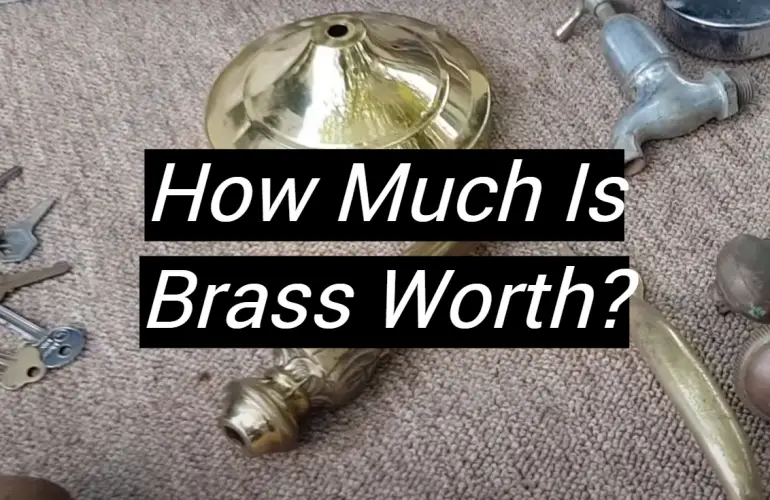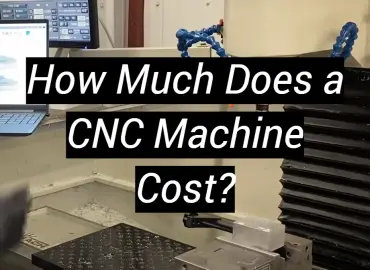Like any other metal, brass has a set value based on its rarity and other factors. In this article, we’ll discuss what affects the price of brass, how to get the best price for your brass, and some interesting trivia about the metal. So, how much is brass worth? Read on to find out!
What is Brass?
Brass is an alloy of copper and zinc. It is a yellowish color when first made but tarnishes to a darker color over time. Brass has a high resistance to corrosion and is often used for musical instruments, plumbing fixtures, and architectural decoration. There are two types of brass, scrap brass, and antique brass.
What Is The Difference Between Scrap And Antique Brass?
Scrap brass is simply raw, unrefined brass that can be sold for its weight in scrap metal prices. This is the most common type of brass sold and is what you will find at your local scrap yard.
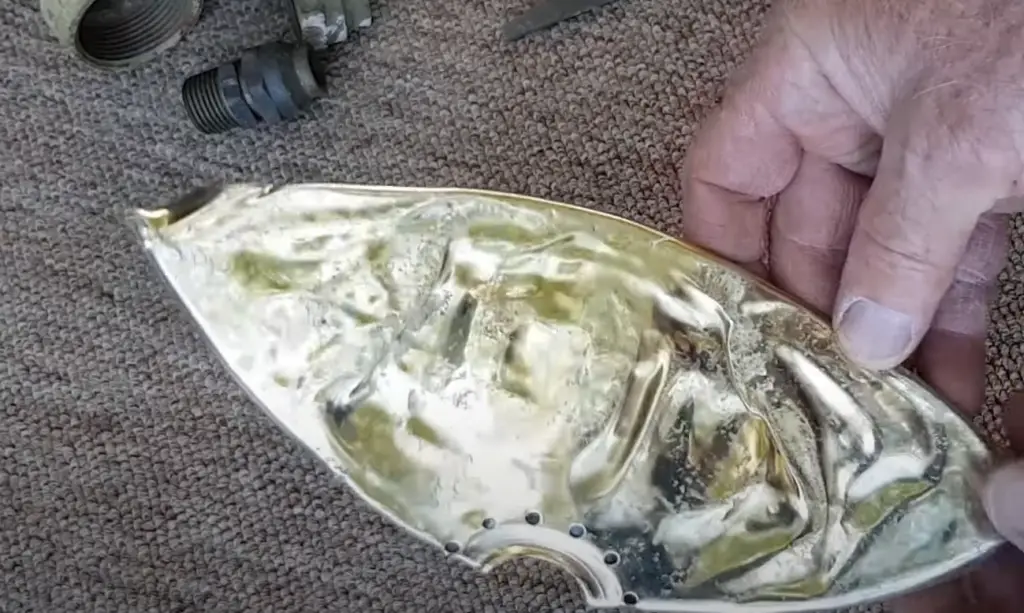
Antique brass is a bit different. This type of brass has been worked and shaped into a specific form, usually by hand. It is often used for decorative purposes or to make musical instruments. Because it is more valuable than scrap brass, antique brass is worth more money.
Types of Brass
Yellow Brass
The most common type of brass is yellow brass, which is made from a combination of copper and zinc. The proportion of each metal used can vary, but typically, yellow brass contains around 70% copper and 30% zinc. This gives it a gold-like color with a slightly yellow tinge.
Yellow brass is the most widely used type of brass because it is relatively strong and easy to work with. It can be found in a range of applications, from plumbing fixtures to musical instruments.
Red Brass
Red brass is made from a combination of copper and zinc, just like yellow brass. However, the proportion of each metal used is different. Red brass contains around 85% copper and 15% zinc. This gives it a reddish color.
However, it does have some advantages. It is stronger than yellow brass and has better resistance to corrosion.Because of these properties, red brass is often used in applications where strength and durability are important, such as plumbing fixtures and valves.
Leaded Yellow Brass
Leaded yellow brass is made from a combination of copper, zinc, and lead. The proportion of each metal used can vary, but typically, leaded yellow brass contains around 60% copper, 30% zinc, and up to 12% lead.
Leaded yellow brass is not as widely used as other types of brass because it is more difficult to work with and has poorer corrosion resistance. However, it does have some advantages. It is stronger than both yellow and red brass and has better machinability.
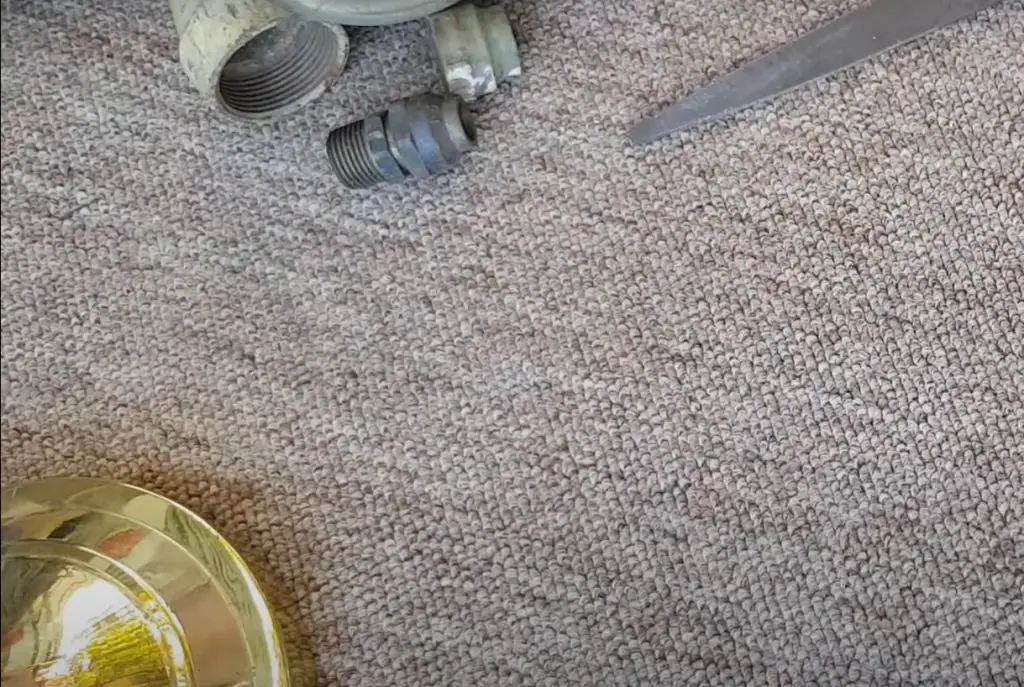
Because of these properties, leaded yellow brass is often used in applications where strength and durability are important, such as plumbing fixtures and valves. [4]
How Much Is Brass Worth?
Brass is an alloy of copper and zinc, and it’s valued for its durability and resistance to corrosion. The metal has a wide range of applications, from plumbing fixtures to musical instruments, and its value can vary depending on the type of brass and the current market conditions.
When it comes to determining the value of brass, there are a few factors to consider. The first is the type of brass, as there are several different alloy compositions that can affect the price. The second is the current market conditions for copper and zinc, as fluctuations in these metals can impact the price of brass. Finally, it’s also important to consider the quantity and quality of the brass being sold.
Generally speaking, the value of brass ranges from $1.25 to $2 per pound. However, there are some types of brass that are worth more than this, such as red brass, which can fetch up to $1.74 per pound. Conversely, there are also some grades of brass that are worth less than this, such as leaded brass, which is typically worth around $1.30 per pound.
Of course, the value of brass can also change depending on the current market conditions for copper and zinc. If the price of these metals goes up, then the value of brass will likely follow suit. Conversely, if the price of copper and zinc falls, then the value of brass will likely also drop.
Finally, it’s also important to consider the quantity and quality of the brass being sold. If you’re selling a large quantity of high-quality brass, then you can expect to get a higher price per pound than if you’re selling a smaller quantity of lower-quality brass.
Few Ways to Tell if Something Is Solid Brass
There are a few ways you can tell if an object is made of solid brass. One way is to look at the color of the metal. Brass has a yellowish hue, whereas other metals like steel or iron have a grayish color. [3] Another way to tell if something is made of brass is to check the weight of the object. Brass is a heavy metal, so an object made of solid brass will be heavier than an object made of another material. Finally, you can try to scratch the surface of the metal. If the metal is brass, you should see a yellowish color beneath the scratch.
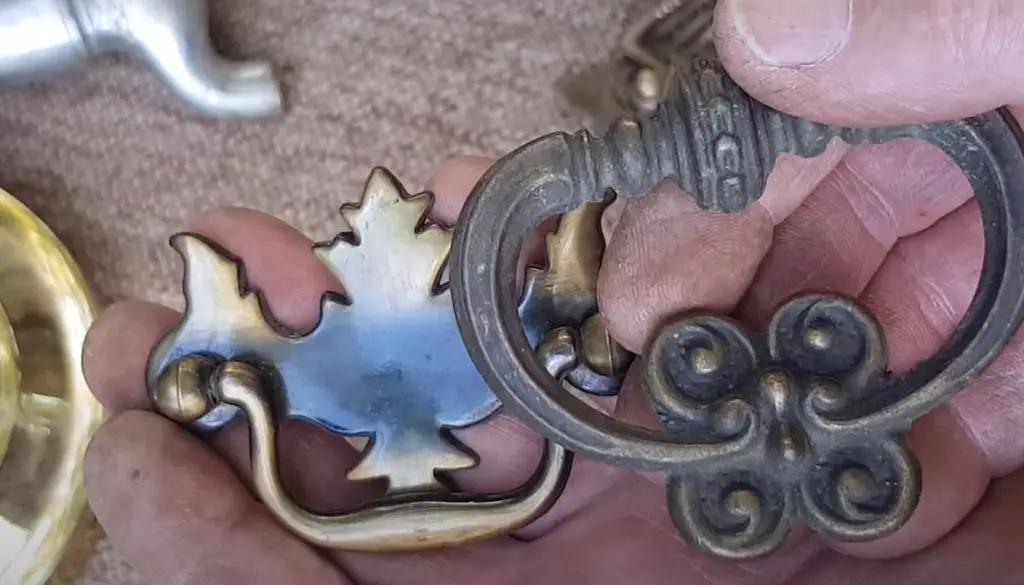
Keep in mind that some objects may be made of brass-plated steel, which means that the object has a thin layer of brass on the surface. To tell if an object is made of brass-plated steel, you can use a magnet. If the magnet sticks to the object, then it is made of steel with a brass coating.
Reasons to Recycle Brass
As the world progresses, it’s important that we find ways to be more sustainable. One way to do this is to recycle brass. Not only does this help reduce waste, but it can also be profitable. Here are some reasons why you should recycle brass:
- Brass is a non-ferrous metal, which means it doesn’t contain iron. This makes it resistant to rust and corrosion, which means it can be recycled over and over again without losing its quality.
- Brass is also a very malleable metal, which means it can be easily shaped into new products.
- Recycling brass saves energy because it takes less energy to melt and shape recycled brass than it does to create new brass from scratch. [2]
- Recycling brass also reduces emissions of greenhouse gasses and other pollutants.
The Brass Recycling Process
Once you have your brass, the next step is to take it to a recycling center.
There are few steps to the brass recycling process.
Step 1: Collection
The first step is simply collecting the brass. This can be done by scouring local metal shops, looking for brass fixtures to salvage, or searching online for brass scrap dealers.
Step 2: Sorting
The next step is sorting your brass by alloy.
Step 3: Melting
The next step is melting the brass down into a liquid form. This can be done with a simple propane torch or a more sophisticated electric furnace.
Step 4: Decontamination
The next step is to remove any impurities from the brass. This can be done by skimming the surface of the molten brass or by using a decontamination process called “electrolytic cleaning”.
Step 5: Hardening
The next step is to harden the brass. This is done by adding a small amount of lead to the molten brass.
Step 6: Transportation of the Metal Bars
After the brass has cooled and hardened, it is cut into small metal bars and transported to a brass mill.
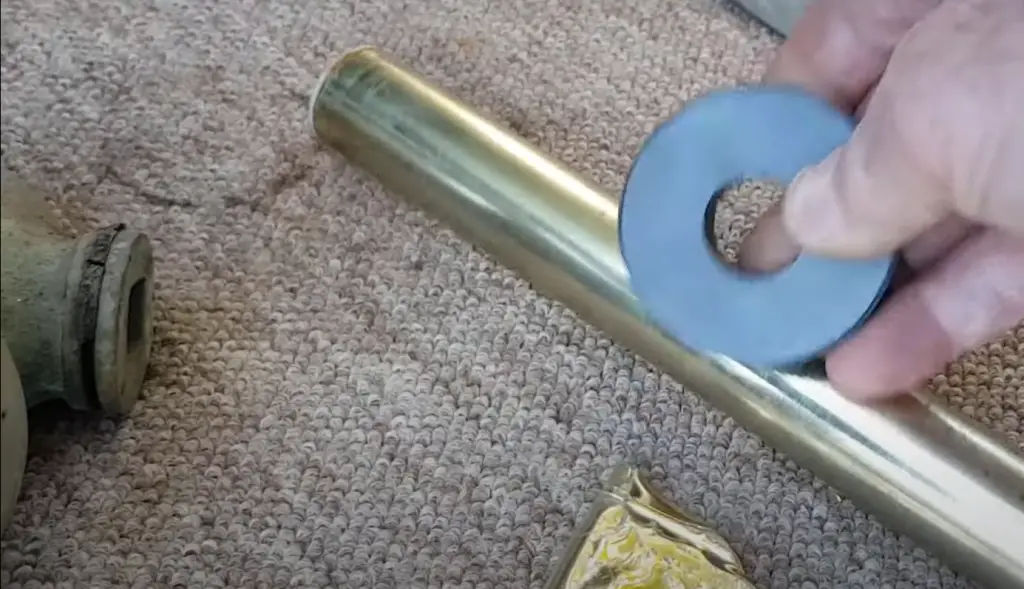
At the brass mill, the metal bars are melted down and made into new products. The most common product made from recycled brass is ammunition. Other products include musical instruments, plumbing fixtures, and architectural hardware.
So there you have it! The entire process of recycling brass, from start to finish. [1]
FAQ
Where can I sell my brass?
There are a few different places that you can sell your brass. One option is to find a local scrap yard or recycling center that accepts brass. Another option is to sell it online through a metal recycling website. Finally, you could also try selling it on classifieds websites or through online auctions.
When selling your brass, be sure to research the current prices for the metal so that you can get the best price possible. Prices for brass can vary depending on the current market conditions and where you are selling it.
They will be able to give you the most accurate information based on your specific situation.What’s worth more money, brass or copper?
The answer to this question may surprise you. While brass is an alloy of both copper and zinc, it’s actually worth less than pure copper. This is because brass is a less popular metal for scrap recycling. However, the price of brass can fluctuate, so it’s important to keep an eye on the market value.
While the price of brass may not be as high as some other metals, it’s still a valuable resource. Brass can be used in a variety of applications, from musical instruments to plumbing fixtures. And because it’s an alloy, brass is also very strong and durable.
How can you tell if brass is antique?
There are a few ways to tell if brass is antique. One way is to look for a patina. Patina is a thin layer of oxide that forms on the surface of brass over time. This can give the metal a greenish, brown, or black color. Antique brass also often has a textured surface due to years of tarnishing and polishing. Another way to tell if brass is antique is by its weight. Brass is a dense metal, so older pieces will be heavier than newer ones.
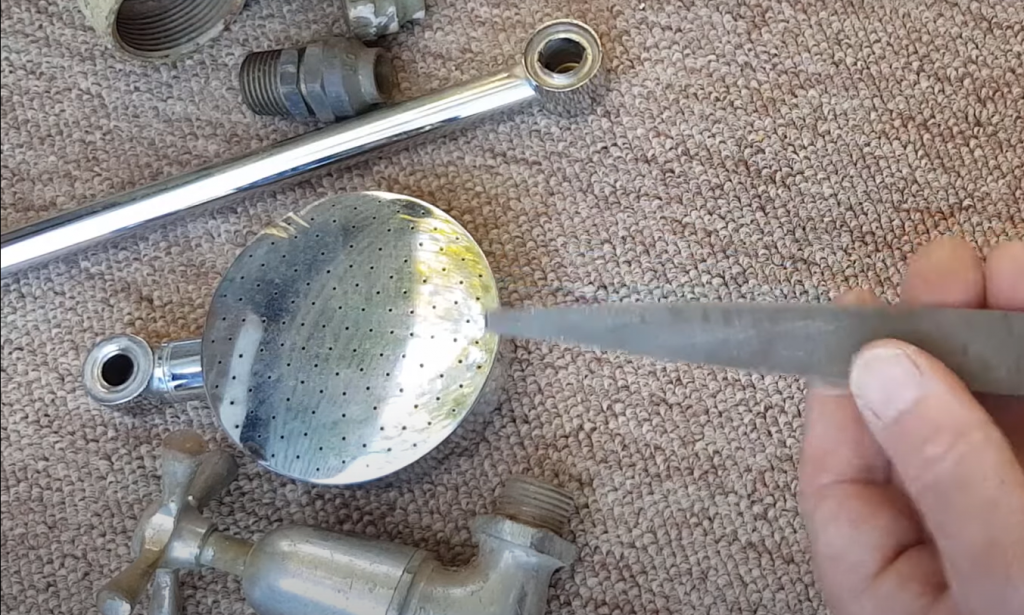
You can also try the magnet test on your brass piece. If it’s attracted to a magnet, then it’s not pure brass (and therefore not as valuable). Finally, you can take your brass piece to an appraiser or metals expert to get a professional opinion.
How can I tell what kind of brass I have?
The first step in determining the value of your brass is to identify what kind of brass it is. The three most common types of brass are yellow brass, red brass, and white metal. Yellow brass is the most common type of brass and is typically used for plumbing fixtures and musical instruments. Red brass is less common and is usually used for decoration or architectural applications. White metal is the least common type of brass and is used primarily for industrial applications.
What electronics contain the most gold?
Computers and other electronic devices are some of the most common sources of gold scrap.
Gold is often used in printed circuit boards, computer chips, and connectors for its conductivity and resistance to corrosion.
Other sources of gold scrap include jewelry, dental work, and old coins or bullion.
How much gold is in a computer? A typical desktop computer contains about four grams of gold. Laptops contain about two grams. Cell phones contain approximately 0.034 grams – about the same as earring backings!
How do you separate gold from brass?
The most common way to separate gold from brass is by using a process called electroplating. This process uses electricity to bind the two metals together. The gold will be attracted to the negative charge and will be deposited onto the brass. The brass will then be washed with a solution that removes the gold.
Gold plating can also be used to separate gold from brass. In this process, a thin layer of gold is applied to the surface of the brass. The gold will adhere to the brass and can then be peeled off.
Another way to separate gold from brass is by using a process called chemical milling. This process uses chemicals to dissolve the gold from the brass. The gold will be left behind in the solution while the brass is washed away.
Finally, you can also use a process called smelting to separate gold from brass. In this process, the brass is melted down and the gold is separated from the molten metal. The gold will settle to the bottom of the crucible and can be poured off.
How much is brass jewelry worth?
Assuming that your brass jewelry is simply made of metal and does not contain any precious stones or other materials, it is worth very little. A scrap dealer will give you a few dollars per pound for it.
However, if your brass jewelry contains semiprecious stones or other valuable materials, it could be worth quite a bit more. A jeweler will be able to give you a better estimate of the value.
In general, though, brass jewelry is not worth very much. If you are looking to get rid of it, your best bet is to sell it to a scrap dealer or take it to a jeweler and see if they are interested in buying it from you.
Useful Video: A beginner’s guide to scrapping Brass. How to identify this valuable scrap metal – plus handy tips!
Conclusions
In the end, brass is worth quite a lot depending on where you get it from and what kind of quality it is. You can generally get a good price for brass if you go to the right places and know what to look for in terms of quality. However, it’s always important to do your research beforehand so that you know exactly what you’re getting into. Thanks for reading! We hope this article helped clear things up for you.
References:
- https://blog.pipingmart.com/metals/recycling-process-of-brass/
- https://consolidatedresources.com/blog/top-5-reasons-why-your-business-should-recycle-brass/
- https://ourpastimes.com/klondike-solitaire.html
- https://diyhomeownerhero.com/brass-per-pound/

